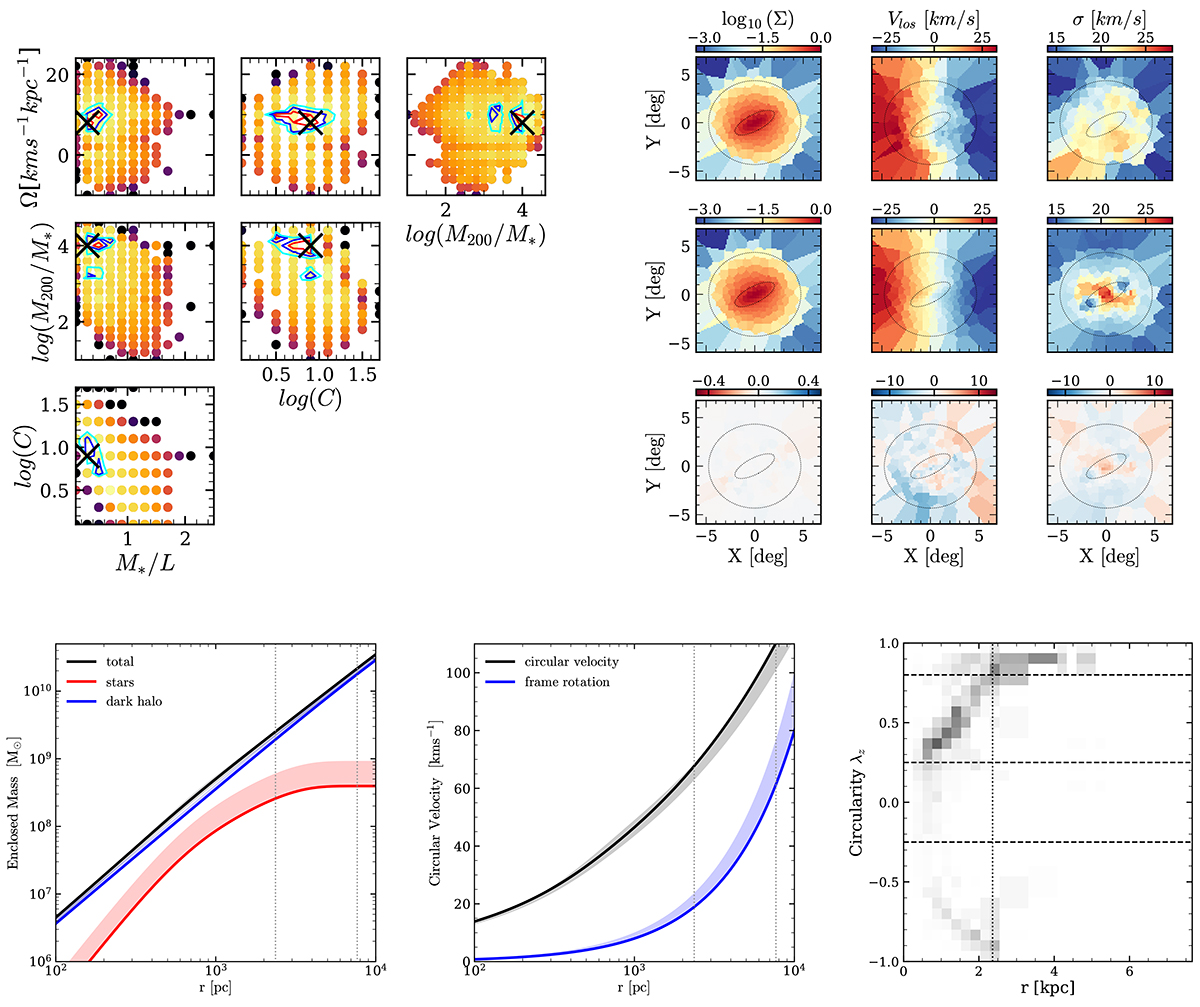Fig. 16.

Download original image
Schwarzschild model results. Top-left panel: Full grid of Schwarzschild models (potential parameters and bar pattern speed) that we computed, colour-coded by χ2. The best-fit model is indicated with a cross, and the one-, two-, and three-σ contours are overplotted with red, blue, and cyan, respectively. Top-right panel: Performance of the best Schwarzschild model with Ω = 8 km s−1 kpc−1. Top-row: Model input. This includes surface brightness MGE, LOS velocity, and smoothed LOS velocity dispersion. Middle row: Model output. This contains the same quantities as computed from the weighted orbits superposition. Bottom row: Model residuals. Bottom-left panel: Enclosed cumulative mass profiles of the stellar (M*/L = 0.3 M⊙/L⊙), DM, and total mass distributions according to the best-fit Schwarzschild model. Bottom-middle panel: Circular velocity curve according to the same model together with the frame rotation with Ω = 8 km s−1 kpc−1. The shaded regions in both panels indicate the 1σ confidence intervals. Bottom-right panel: Orbit weights as a function of their circularity and radius for the best-fit model. The vertical line denotes the size of the bar, and the horizontal lines differentiate different types of orbits: λz ∼ 0 are radial orbits, λz ∼ 1 are highly circular orbits, and λz < 0 are retrograde.
Current usage metrics show cumulative count of Article Views (full-text article views including HTML views, PDF and ePub downloads, according to the available data) and Abstracts Views on Vision4Press platform.
Data correspond to usage on the plateform after 2015. The current usage metrics is available 48-96 hours after online publication and is updated daily on week days.
Initial download of the metrics may take a while.


